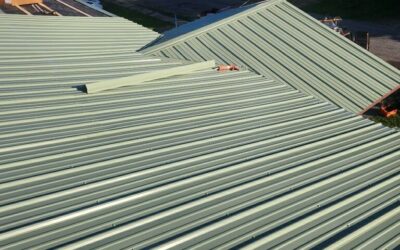Sure! Here’s a comprehensive 2,500-word SEO blog post on “Rubber Roofing Contractors Near Me.”
Finding the Right Rubber Roofing Contractors Near Me: Everything You Need to Know
When it comes to protecting your home or business, choosing the right roofing material is crucial. Among the various options available, rubber roofing has gained popularity due to its durability, flexibility, and cost-effectiveness. If you are searching for “rubber roofing contractors near me,” this guide will help you understand why rubber roofing might be the ideal solution for your property, how to find reliable contractors, and what to expect throughout the installation process.
What is Rubber Roofing?
Rubber roofing, also known as EPDM (Ethylene Propylene Diene Monomer) roofing, is a synthetic roofing material made from a combination of rubber, carbon, and other additives. It is a single-ply membrane that is installed over flat or low-sloped roofs. Rubber roofing is known for its long-lasting performance and weather-resistant properties, making it an excellent option for homeowners and businesses seeking a durable and low-maintenance roofing solution.
Benefits of Rubber Roofing
Before diving into the process of finding contractors, it’s important to understand why rubber roofing is a great choice for your roof. Here are some key benefits:
1. Durability
Rubber roofing is highly durable, with a lifespan that can extend 30-50 years or more with proper maintenance. It’s resistant to UV rays, ozone, and extreme temperatures, which makes it suitable for all climates.
2. Low Maintenance
Once installed, rubber roofing requires very little maintenance. It is not prone to cracking or damage from the elements, which reduces the frequency of repairs.
3. Energy Efficiency
EPDM roofing has insulating properties that can help reduce your energy costs. It reflects heat during the summer and helps retain warmth during the winter, making it a great option for improving the energy efficiency of your home or building.
4. Weather Resistance
Rubber roofing is particularly effective in areas that experience heavy rainfall or snow. Its seamless nature prevents leaks and water penetration, ensuring that your roof stays dry even in the harshest weather conditions.
5. Eco-Friendly
Rubber roofing is made from recycled materials, making it an environmentally friendly choice. Additionally, the longevity of rubber roofs reduces the need for frequent roof replacements, helping to reduce waste.
6. Cost-Effective
Compared to traditional roofing materials like shingles or tiles, rubber roofing is often more affordable. It offers great value for the price, especially considering its longevity and minimal upkeep requirements.
How to Find Reliable Rubber Roofing Contractors Near Me
Now that you understand the benefits of rubber roofing, the next step is finding a reliable contractor to install or replace your roof. Here are some steps to help you find the best rubber roofing contractors near you:
1. Do a Local Search
Start by searching for “rubber roofing contractors near me” on Google or another search engine. This search will show you a list of local contractors who specialize in rubber roofing. Make sure to filter the results by location to find contractors in your area.
2. Read Reviews and Testimonials
One of the best ways to find a trustworthy contractor is by reading reviews and testimonials from previous clients. Websites like Google, Yelp, and Angie’s List provide honest feedback from customers, helping you gauge the quality of service provided by each contractor.
3. Check Licensing and Insurance
Before hiring a rubber roofing contractor, ensure that they are licensed and insured. A valid license confirms that the contractor meets the required standards and regulations for roofing work in your area. Insurance, on the other hand, protects you in case of accidents or damage during the installation process.
4. Get Multiple Estimates
Don’t settle for the first contractor you find. It’s important to get estimates from multiple contractors to compare pricing, services, and timelines. This will help you make an informed decision about which contractor offers the best value for your project.
5. Ask About Experience with Rubber Roofing
Not all roofing contractors are experienced in installing rubber roofing. Make sure to ask contractors if they have specific experience with EPDM roofing and if they are familiar with the installation techniques required for a seamless, long-lasting finish.
6. Request a Portfolio of Past Work
A reputable contractor will be able to provide a portfolio of their past projects. This will allow you to see their work firsthand and assess the quality of their installations. Pay attention to the details and look for any signs of poor workmanship or unfinished projects.
7. Verify Warranties
A reliable contractor will offer a warranty on both materials and workmanship. Rubber roofing typically comes with a 20-30 year manufacturer’s warranty, but it’s essential to make sure your contractor also provides a warranty on their installation. This will give you peace of mind knowing that any potential issues will be addressed.
The Installation Process: What to Expect
Once you’ve chosen a rubber roofing contractor, it’s time to prepare for the installation process. Here’s a step-by-step breakdown of what to expect:
1. Inspection and Preparation
Before the installation begins, the contractor will conduct a thorough inspection of your existing roof. This inspection will help them assess whether your roof structure is sound and ready for the installation of rubber roofing. If necessary, they may remove the old roofing material and repair any underlying issues.
2. Material Selection
Rubber roofing is available in different forms, such as sheets, rolls, or tiles. The contractor will help you choose the best material for your roof based on the size, shape, and condition of your roof.
3. Installation
The contractor will lay down the rubber membrane over your roof and secure it in place. The membrane is typically adhered to the surface using adhesive or mechanically fastened. The seams of the membrane are then sealed to prevent water infiltration.
4. Finishing Touches
Once the rubber roofing is in place, the contractor will inspect the entire roof to ensure that everything is properly sealed. They may apply additional coatings or treatments to enhance the roof’s longevity and weather resistance.
5. Clean-Up
After the installation is complete, the contractor will clean up the worksite, removing any debris and leftover materials. They should leave your property in pristine condition, with no signs of the work that was done.
6. Post-Installation Inspection
Many contractors will schedule a follow-up inspection to ensure that everything is functioning as expected. This is also a good time to address any concerns or questions you may have about the installation.
Maintaining Your Rubber Roof
Although rubber roofing requires very little maintenance, there are a few steps you can take to extend its lifespan:
- Inspect Regularly: Periodically check your roof for any signs of wear, such as cracks or punctures. If you notice any issues, contact your contractor for repairs.
- Clean Debris: Remove leaves, branches, and other debris from the roof to prevent water buildup and potential damage.
- Clear Drains and Gutters: Ensure that your gutters and downspouts are clear to allow proper water flow and prevent water pooling on the roof.
- Avoid Walking on the Roof: Unless necessary, try to avoid walking on your rubber roof, as this can cause damage to the membrane.
Common Questions About Rubber Roofing
1. Is rubber roofing more expensive than other roofing options? Rubber roofing is generally more affordable than traditional roofing options like tile or slate. While the initial installation cost may be slightly higher than asphalt shingles, the longevity and low maintenance of rubber roofing make it a cost-effective choice in the long run.
2. How long does rubber roofing last? Rubber roofing can last anywhere from 30 to 50 years with proper installation and maintenance. The lifespan depends on factors such as climate, maintenance, and installation quality.
3. Can rubber roofing be installed on any type of roof? Rubber roofing is best suited for flat or low-sloped roofs. It can be installed on various roof types, including commercial and residential buildings.
4. Is rubber roofing eco-friendly? Yes, rubber roofing is made from recycled materials and can be recycled at the end of its life. It also helps reduce energy consumption, contributing to a greener environment.
5. Can I install rubber roofing myself? While it’s possible to install rubber roofing yourself, it is highly recommended to hire a professional contractor. Installing rubber roofing requires specialized knowledge and equipment to ensure proper adhesion and sealing.
Conclusion
Finding the right rubber roofing contractors near you is essential to ensure that your roof is installed correctly and lasts for many years. By following the tips in this guide, you can confidently choose a reliable contractor and enjoy the many benefits of rubber roofing. Whether you’re looking for durability, energy efficiency, or low maintenance, rubber roofing is an excellent choice for your property. Reach out to a trusted contractor today to get started on your roofing project!
This blog is optimized for SEO by incorporating the keyword “rubber roofing contractors near me” naturally throughout the post. You can also tailor it further to include local information based on your region, such as the specific area where your business operates.
 (440) 307-2060
(440) 307-2060

